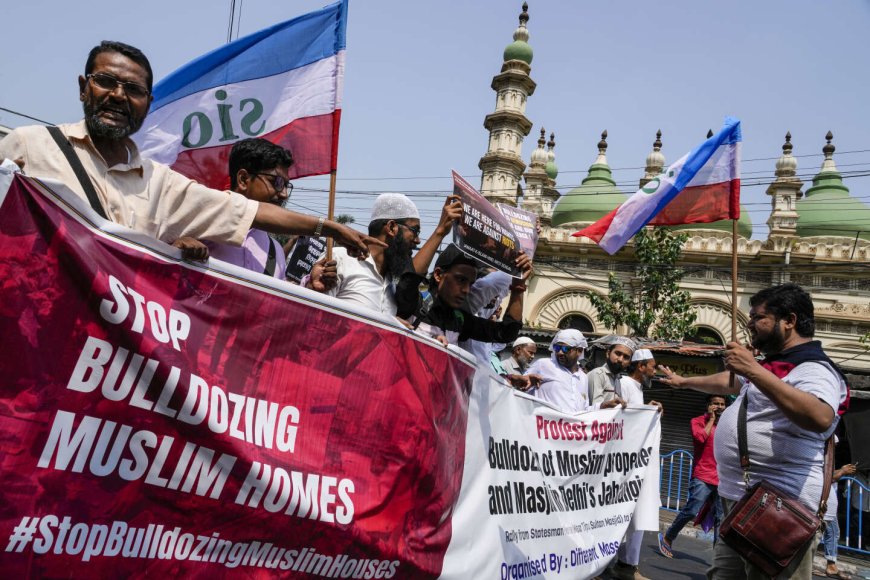The New Wave of Islamophobia: A Growing Global Concern
The new wave of Islamophobia is shaping global discourse, fueled by political rhetoric, media narratives, and social dynamics. Explore its implications and impact in this detailed analysis.

The rise of Islamophobia has become an increasingly significant issue in the global socio-political landscape. This new wave of Islamophobia is marked by heightened prejudice, discrimination, and hostility towards Muslims. It is not merely a continuation of past fears and biases but an evolved form deeply ingrained in modern societal structures, media narratives, and political agendas. This article explores the factors driving this new wave, its manifestations across different regions, and its profound impact on Muslim communities worldwide.
The Origins of Islamophobia: Historical Context
To understand the current wave of Islamophobia, it is essential to explore its historical roots. Islamophobia has existed for centuries, often driven by misconceptions, cultural clashes, and geopolitical conflicts. The term itself, though relatively recent, encapsulates a long-standing fear and suspicion of Islam and its followers. Historically, the new wave of Islamophobia was often linked to the Crusades, colonialism, and the orientalist attitudes that portrayed the Muslim world as backward and threatening. These early forms of prejudice have evolved and been influenced by modern-day events and global shifts in power dynamics.
The Role of Media in Amplifying Islamophobia
The media plays a pivotal role in shaping public perceptions, and its portrayal of Islam and Muslims has significantly contributed to the new wave of Islamophobia. News outlets and social media platforms often focus on negative stereotypes, linking Islam predominantly with terrorism, extremism, and violence. This biased coverage perpetuates harmful narratives, reinforcing fears and prejudices. The repetition of these images and stories can create a skewed perception of Muslims, making it easier for Islamophobic sentiments to take root and spread.
In recent years, the rise of digital media and the 24-hour news cycle have exacerbated this problem. Sensationalist headlines and viral content, often lacking context, can inflame public opinion and contribute to the dehumanization of Muslim communities. The result is a growing divide between Muslims and non-Muslims, with the former increasingly viewed through a lens of suspicion and hostility.
Political Rhetoric and Islamophobia: A Dangerous Alliance
Political rhetoric has also played a crucial role in the spread of the new wave of Islamophobia. In many countries, politicians and political parties have exploited fear of Islam for electoral gain. This strategy, known as “othering,” involves portraying Muslims as a threat to national identity, security, and values. By framing Muslims as the “other,” politicians can rally support from voters who feel threatened by cultural diversity and change.
This tactic is not limited to any one region or political ideology. From the rise of far-right parties in Europe to the implementation of travel bans and discriminatory policies in the United States, Islamophobic rhetoric has become a powerful tool in modern politics. Such rhetoric not only legitimizes prejudice but also encourages individuals and groups to act on their Islamophobic beliefs, leading to increased hate crimes and discrimination against Muslims.
The Social Impact of the New Wave of Islamophobia
The new wave of Islamophobia has far-reaching social consequences. For Muslim communities, it has led to a sense of alienation, fear, and marginalization. Muslims are increasingly subjected to verbal and physical assaults, workplace discrimination, and exclusion from social and civic life. This pervasive climate of hostility can have severe psychological effects, contributing to feelings of anxiety, depression, and isolation.
Furthermore, the rise of Islamophobia has strained interfaith relations and eroded social cohesion. In many communities, trust between Muslims and their non-Muslim neighbors has been eroded, leading to increased tensions and conflicts. This divisive atmosphere undermines efforts to build inclusive and harmonious societies, creating a more fragmented and polarized world.
Islamophobia in the Age of Globalization
Globalization has played a complex role in the spread of Islamophobia. On the one hand, increased interconnectedness and migration have brought people from diverse backgrounds into closer contact, fostering greater understanding and tolerance. On the other hand, globalization has also facilitated the spread of Islamophobic ideas across borders. Extremist groups and individuals can now disseminate their views more widely and quickly, using the internet and social media to reach global audiences.
This global spread of Islamophobia has resulted in a kind of transnational Islamophobia, where prejudices and fears are shared and reinforced across different countries and cultures. As a result, Muslims around the world face similar challenges, whether they are living in Western democracies, authoritarian regimes, or developing nations. This phenomenon underscores the need for a coordinated and global response to combat Islamophobia effectively.
Combatting the New Wave of Islamophobia: Strategies and Solutions
Addressing the new wave of Islamophobia requires a multifaceted approach. Governments, civil society organizations, and individuals all have a role to play in challenging prejudice and promoting tolerance. Education is a crucial tool in this effort, as it can help dispel myths and misconceptions about Islam and Muslims. By fostering greater cultural understanding and empathy, educational initiatives can counteract the fear and ignorance that fuel Islamophobia.
Media outlets also have a responsibility to provide balanced and accurate coverage of Islam and Muslim communities. This includes highlighting positive stories and contributions from Muslims and providing context for the challenges these communities face. Responsible journalism can play a crucial role in shifting public perceptions and reducing Islamophobic attitudes.
At the political level, leaders must resist the temptation to exploit Islamophobia for political gain. Instead, they should promote policies that protect the rights of all citizens, regardless of their religion or background. This includes enforcing anti-discrimination laws, supporting interfaith dialogue, and addressing the root causes of extremism and violence.
Conclusion
The new wave of Islamophobia represents a significant challenge to global peace and social cohesion. It is a complex phenomenon driven by historical legacies, media narratives, political rhetoric, and social dynamics. Combating this wave requires a concerted effort from all sectors of society, including governments, media, and individuals. By promoting understanding, tolerance, and respect, we can begin to reverse the tide of Islamophobia and build more inclusive and harmonious communities.
What's Your Reaction?
 Like
0
Like
0
 Dislike
0
Dislike
0
 Love
0
Love
0
 Funny
0
Funny
0
 Angry
0
Angry
0
 Sad
0
Sad
0
 Wow
0
Wow
0



















































